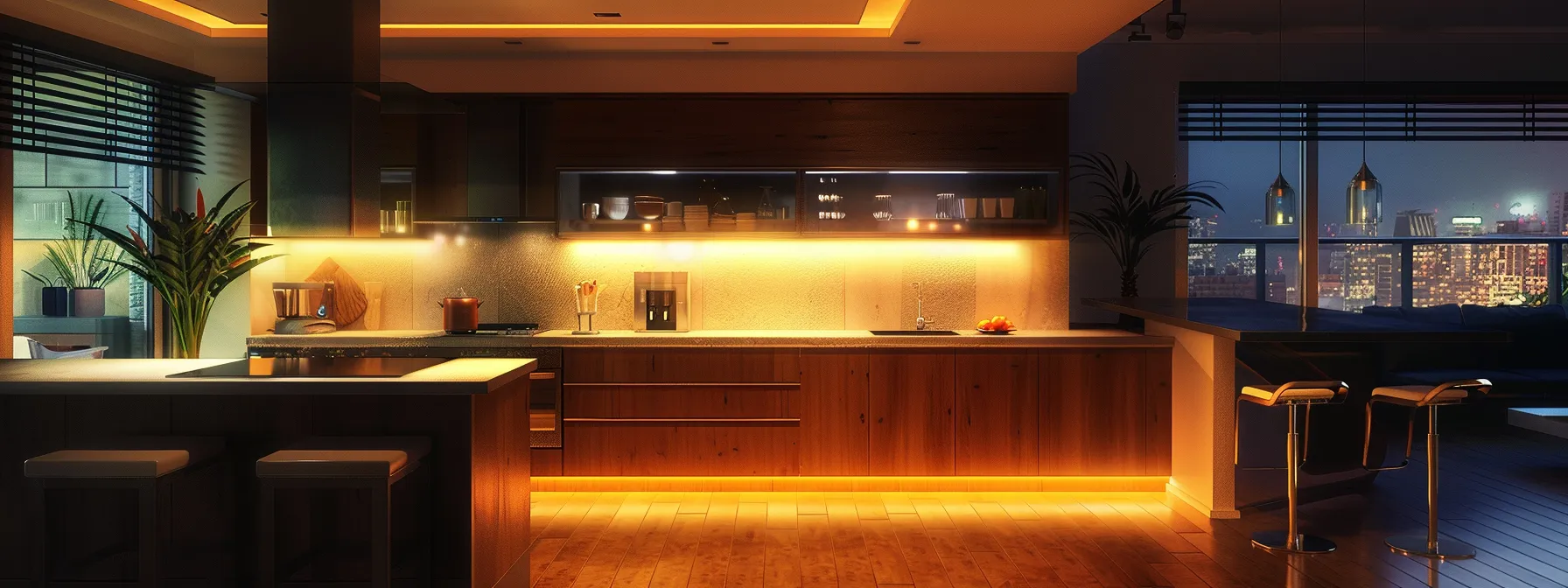

Many homeowners believe that stylish kitchen design and sustainability can’t go hand in hand. This post reveals that they absolutely can. Readers will discover essential materials for a sustainable kitchen, eco-conscious design practices, and energy-efficient appliances that not only enhance aesthetics but also reduce environmental impact. Engaging with this content will provide practical insights to help readers create a kitchen that reflects both their style and values, solving the common challenge of merging beauty with eco-friendliness.
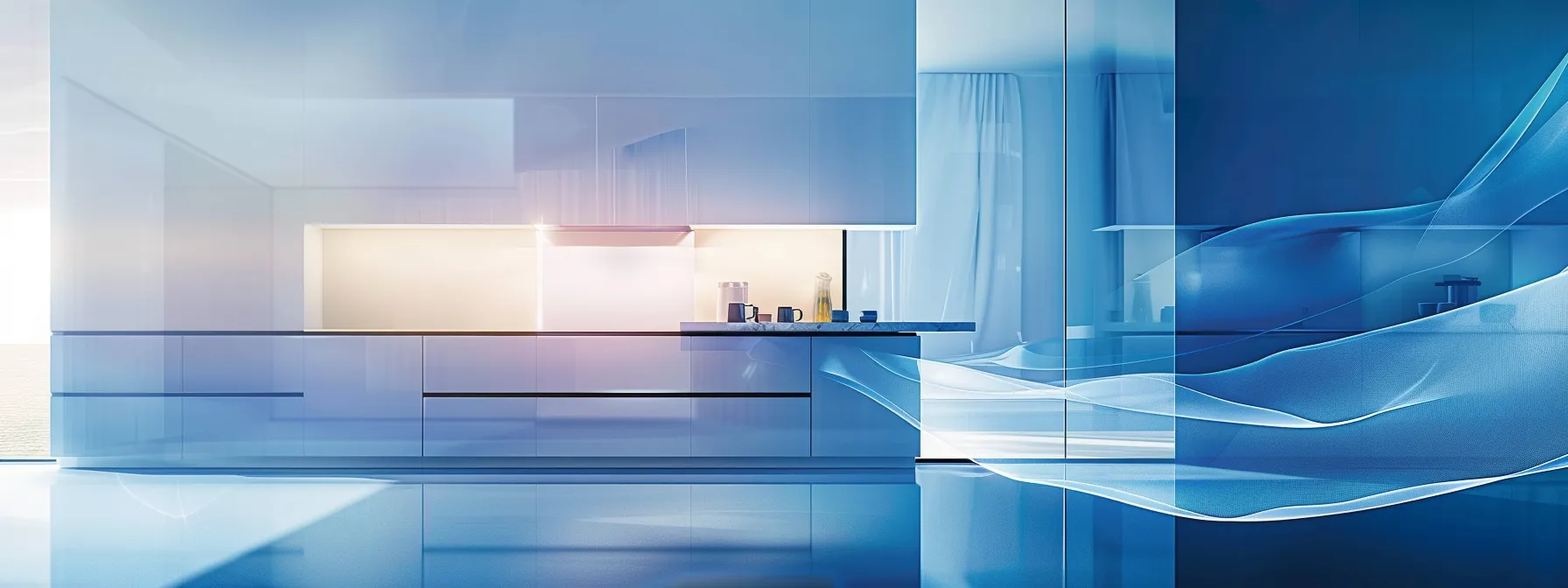
Stylish kitchen design incorporates principles that emphasize both beauty and eco-friendliness. This section explores how to balance aesthetics with sustainable choices, focusing on reducing energy consumption and utilizing innovative water heating systems. Attention to materials and fixtures not only enhances the visual appeal but also lessens reliance on fossil fuels, making kitchens both fashionable and environmentally responsible.
Stylish and sustainable kitchen design combines aesthetics with environmental responsibility. For instance, utilizing energy-efficient ovens reduces carbon emissions, while selecting materials that are sourced from sustainable practices mitigates issues like deforestation. Opting for durable materials can provide both visual appeal and lower the overall environmental impact of the kitchen.
Incorporating sustainable elements such as furniture made from reclaimed wood or high-quality particle board can enhance kitchen design while promoting responsible resource usage. These choices not only create a chic look but also support sustainability efforts by minimizing waste and reducing the carbon footprint associated with manufacturing in factories. Homeowners can make a significant difference by being mindful of their choices:
Balancing aesthetics with eco-friendliness in kitchen design involves selecting materials and appliances that not only look good but also contribute to sustainable practices. Innovative construction techniques can integrate energy-efficient heating systems, reducing energy consumption while enhancing the ambiance of the kitchen. For example, using reclaimed wood for cabinetry adds natural beauty and minimizes deforestation impact, addressing significant environmental issues.
Thoughtful architectural choices can further elevate a kitchen’s style while promoting eco-friendly practices. Incorporating features like large windows allows for natural light to illuminate the space, reducing the need for artificial heat or light sources during the day. Together, these strategies create a kitchen that reflects personal taste while being conscious of the environment and the resources it relies on, such as sustainable bark materials for countertops.
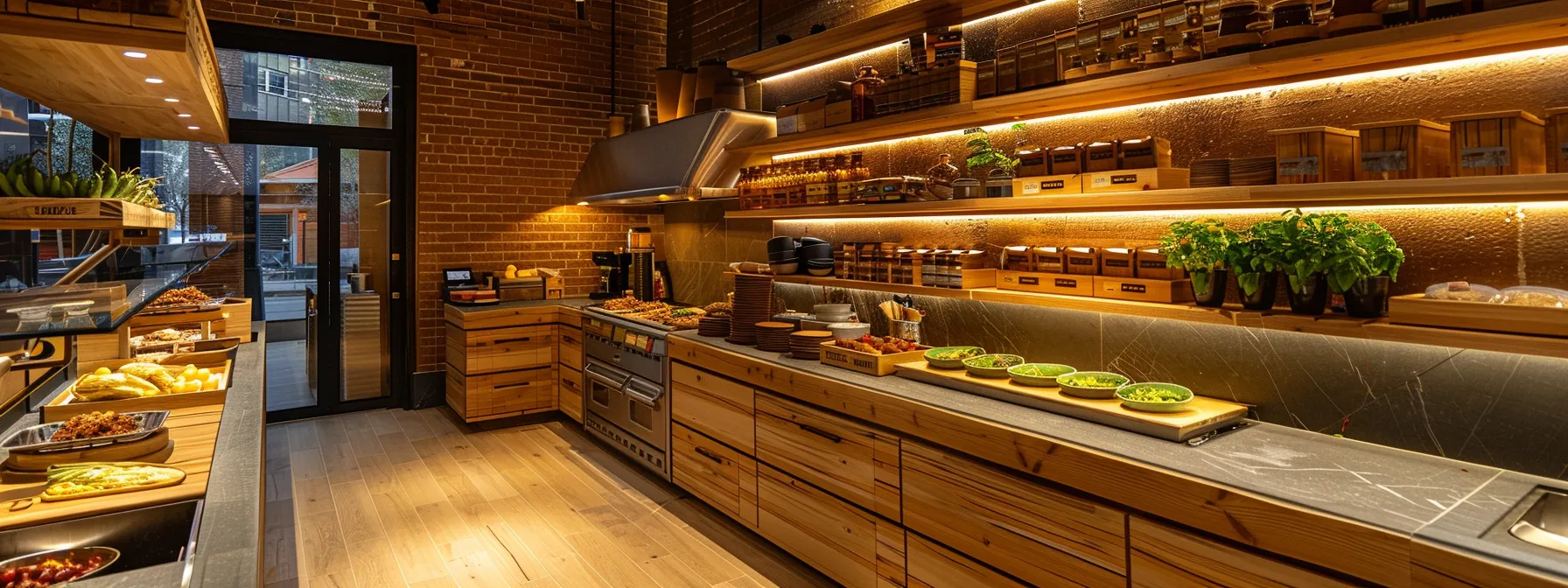
Choosing sustainable materials is crucial for a stylish and eco-friendly kitchen remodel. Reclaimed wood for cabinetry and furniture adds character while reducing waste. Bamboo serves as a renewable alternative, providing a chic look. Innovative recycled countertop options can minimize plastic use, and eco-friendly backsplash materials contribute to energy conservation. Each of these elements enhances interior design while supporting responsible choices.
Choosing reclaimed wood for cabinets and furniture is an excellent way to incorporate sustainability into kitchen design while maintaining a stylish appearance. This decision not only offers a unique visual appeal but also contributes to recycling efforts by utilizing lumber that has been salvaged from old buildings or furniture. By selecting reclaimed wood, homeowners can enjoy the taste of environmental responsibility while creating beautiful and functional spaces.
Reclaimed wood serves as a renewable resource that reduces demand for new lumber, helping to combat deforestation. In addition, it can often be more durable than conventional fiberboard, providing long-lasting quality. Homeowners seeking sustainable options should consider how reclaimed wood enhances both their aesthetic preferences and their commitment to responsible living:
Bamboo is increasingly recognized as a brilliant sustainable choice in kitchen design. This environmentally friendly material is known for its rapid growth, making it a renewable resource that can help combat pollution associated with traditional lumber harvesting. As a stylish alternative, bamboo provides homeowners with an option that not only enhances the aesthetics of the kitchen but also aligns with their commitment to sustainability.
Incorporating bamboo into kitchen cabinetry and furniture adds unique charm while supporting responsible living. Brands that offer bamboo products often emphasize durability, ensuring these items withstand the demands of daily cooking without sacrificing style. Homeowners looking to create an eco-conscious kitchen can enjoy the benefits of bamboo while making choices that reflect a greater awareness of environmental impact:
Innovative recycled countertop options bring both style and sustainability to kitchen remodeling projects. Materials such as recycled glass or eco-friendly soapstone can enhance the efficiency of a kitchen by offering durable surfaces that withstand daily use. Homeowners benefit from choosing these countertop materials, as they not only reduce the environmental impact of their renovations but also provide a unique aesthetic that can elevate the overall design of the space.
Additionally, countertops made from mineral-based materials create an elegant look, often resembling traditional stone while being more environmentally friendly. By selecting recycled options, homeowners contribute to a more responsible kitchen design that prioritizes both visual appeal and efficiency. This approach can significantly address concerns about waste and resource consumption in kitchen renovations.
Eco-friendly backsplash materials play a vital role in achieving sustainable kitchen design. Options such as glass tiles made from recycled materials not only enhance aesthetic appeal but also contribute to green building practices. When selecting these materials, homeowners can look for products certified by the Forest Stewardship Council to ensure responsible sourcing, minimizing environmental impact while combating air pollution associated with manufacturing processes.
Integrating eco-friendly backsplashes into kitchen remodels can effectively reduce overall resource consumption. For example, using ceramic tiles made from reclaimed materials or natural stone can create a striking visual feature behind the sink, while also promoting sustainability. These choices align with current trends in stylish and responsible kitchen designs, allowing homeowners to achieve both beauty and conscience in their living spaces:

Smart space planning for energy efficiency involves arranging elements in the kitchen to minimize energy use, while incorporating natural light can significantly enhance the ambiance and reduce reliance on electric lighting. Additionally, using non-toxic paints and finishes, such as those made from linoleum or oak, can improve indoor air quality and maintain an environmentally friendly space. Each topic will provide practical insights for creating a stylish and sustainable kitchen.
Smart space planning for energy efficiency is vital in modern kitchen design, contributing to the fight against climate change by reducing greenhouse gas emissions. By arranging kitchen elements strategically, homeowners can optimize natural lighting, minimizing the need for artificial sources. For instance, incorporating large windows or skylights can flood the space with sunlight, joyfully illuminating work areas without the additional energy cost.
Furthermore, using certified wood for cabinetry and sustainable materials like stainless steel for appliances not only enhances the kitchen’s visual appeal but also promotes long-term sustainability. This careful selection of materials ensures durability and contributes to an eco-friendly environment by decreasing reliance on energy-intensive products. Homeowners can create stylish kitchens while actively participating in responsible resource management:
Incorporating natural light into kitchen spaces not only brightens up the area but also enhances the overall lifestyle within a home. Strategically positioning windows or skylights can minimize reliance on artificial lighting, significantly reducing the kitchen’s carbon footprint. Homeowners aiming for chic designs, such as naked kitchens, can use expansive glass elements that create a seamless connection between indoor and outdoor spaces, allowing sunlight to flood the area.
Choosing surfaces like caesarstone countertops can further complement natural light by reflecting brightness, contributing to an overall airy feel in the kitchen. Utilizing eco-friendly materials, such as resin for cabinetry, supports a sustainable approach while harmonizing with light’s effects. This blend of functionality and style addresses modern homeowners’ desire for aesthetics that prioritize both beauty and environmental responsibility.
Using non-toxic paints and finishes is a significant step toward creating a stylish and sustainable kitchen. These sustainable products reduce harmful emissions commonly associated with traditional paints, thus minimizing their environmental impact. For instance, selecting paints that are Energy Star compliant ensures that the kitchen remains a healthier space, free from volatile organic compounds (VOCs) that can affect air quality, especially around appliances like dishwashers, which often operate in close proximity to countertops and cabinetry.
Homeowners can further enhance their commitment to eco-friendly design by incorporating bamboo accents, which can be finished with non-toxic coatings that are safe for indoor use. This choice not only promotes responsible resource use but also contributes to a visually pleasing aesthetic that complements contemporary kitchen styles. By prioritizing non-toxic options, homeowners create inviting spaces that reflect their values while supporting a sustainable lifestyle.
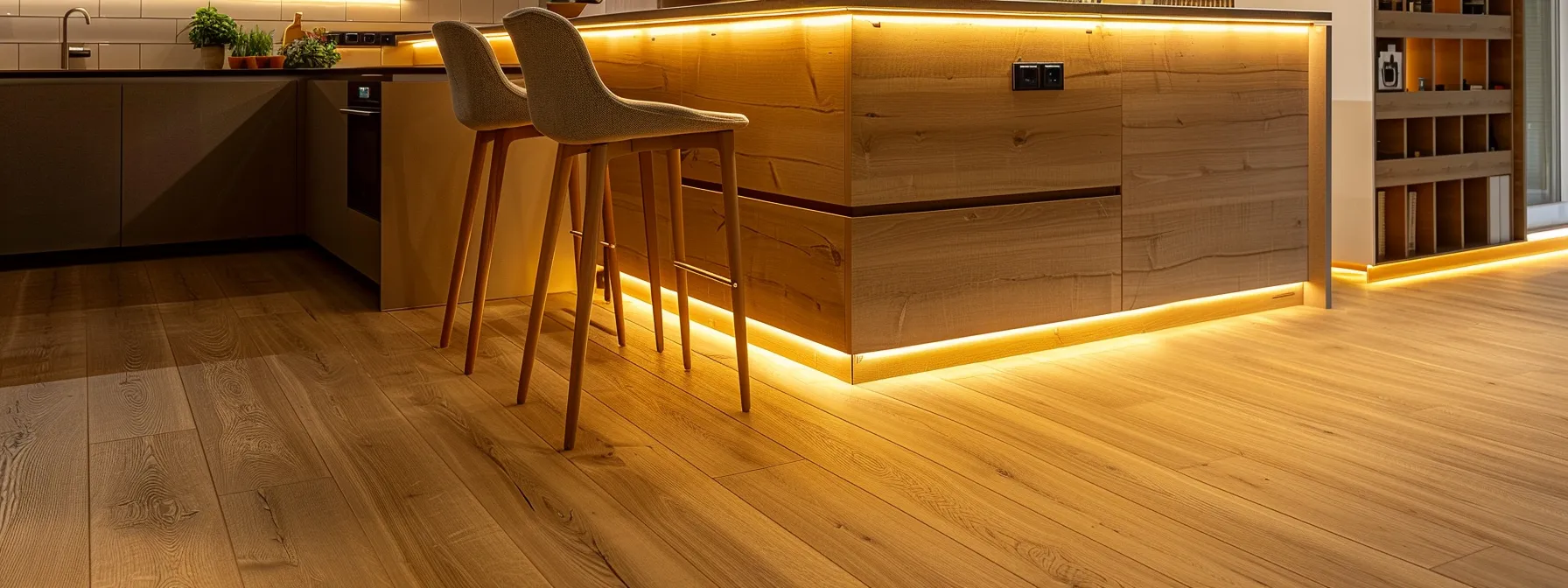
Evaluating cork and bamboo flooring provides insights into utility and sustainability, offering homeowners stylish options with low formaldehyde emissions. Analyzing reclaimed wood flooring choices gives a rustic charm while promoting responsible resource use. Additionally, selecting eco-friendly tile solutions ensures both durability and aesthetic appeal, allowing for a well-rounded approach to kitchen design that reflects a commitment to environmental responsibility.
Cork and bamboo flooring present excellent options for homeowners aiming for sustainable design in their kitchens. Cork, harvested from the bark of cork oak trees, offers natural insulation and comfort underfoot, making it ideal for spaces with a gas stove. Bamboo, known for its rapid growth, adds a modern aesthetic while being highly durable, perfect for kitchens that blend function with style. Both materials thrive in designs featuring ample daylight, enhancing their natural beauty and creating an inviting atmosphere.
Utilizing cork and bamboo as flooring materials not only contributes to an eco-friendly kitchen but also complements a range of design choices. Their unique textures harmonize beautifully with various countertops and tile selections, allowing for a cohesive look that meets both style and sustainability goals. Homeowners can enjoy the benefits of these resources while reducing their environmental impact, making these materials a smart choice for anyone looking to remodel their kitchen responsibly.
Reclaimed wood flooring stands out as a sustainable choice for kitchens and bathrooms, offering both aesthetic appeal and environmental benefits. Homeowners can select flooring sourced from salvaged structures, contributing to waste reduction and promoting responsible resource use. This choice aligns with a commitment to sustainability, especially when paired with kitchen design services that prioritize eco-friendly materials, ensuring spaces that reflect personal style while caring for the planet.
In addition to their environmental advantages, reclaimed wood floors can provide a distinctive character to kitchen and bath areas. These materials often come with warranties, demonstrating durability and reliability for everyday usage. By incorporating reclaimed wood, homeowners not only enhance their interior design but also create a space that is mindful of compost and recycling practices, paving the way for a greener household.
Selecting eco-friendly tile solutions can significantly enhance any kitchen while minimizing environmental impact. Materials such as recycled ceramic and quartz not only offer durability but also come in stylish designs that fit modern aesthetics. For example, companies like Cambria provide beautiful quartz surfaces that are engineered with sustainability in mind, allowing homeowners to indulge in elegance without compromising their values.
In addition to their stylish appeal, eco-friendly tile options often utilize sustainable packaging, reducing waste associated with traditional manufacturing processes. Homeowners can explore a variety of designs, from textured ceramics to sleek quartz options, allowing for a versatile approach to kitchen layouts. When choosing tiles, considering long-lasting quality is key to ensuring a flooring solution that serves both aesthetic and sustainability goals:
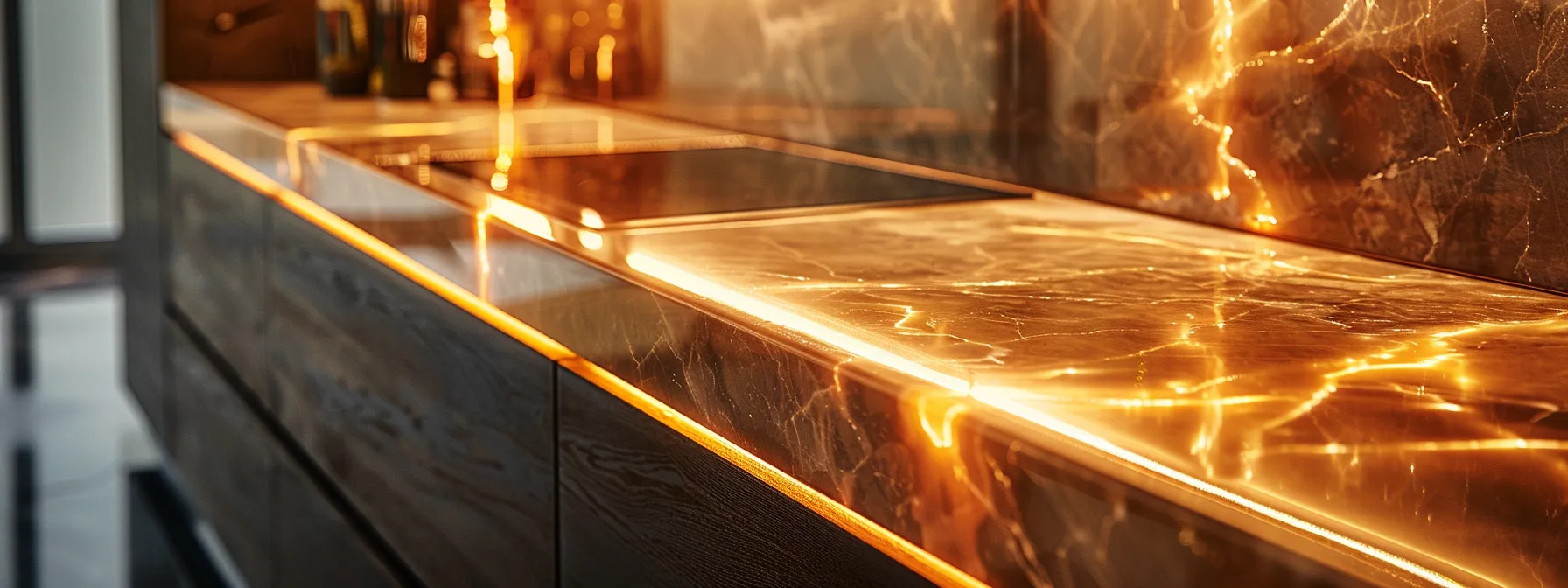
Energy-efficient appliances significantly enhance kitchen sustainability while offering long-term durability. Homeowners can benefit from Energy Star rated appliances, which reduce energy consumption and operating costs. Choosing induction cooktops promotes efficiency in cooking, while sustainable refrigerator options contribute to a circular economy. Each of these choices not only aligns with stylish designs, like marble accents in kitchen cabinets, but also fosters an eco-friendly lifestyle.
Energy Star rated appliances play a pivotal role in reducing greenhouse gas emissions while providing significant savings on energy bills. When homeowners choose these efficient models during a kitchen remodel or renovation, they not only contribute to a healthier planet but also optimize their household’s energy usage. For example, Energy Star refrigerators consume up to 15% less energy compared to standard models, resulting in lower operating costs and a decreased reliance on oil-derived electricity.
In addition to energy savings, many Energy Star appliances also support water conservation efforts, making them an ideal choice for environmentally conscious homeowners. Dishwashers and washing machines that meet Energy Star criteria use less water without compromising performance, thereby addressing water scarcity issues. By selecting these appliances, homeowners can create a stylish kitchen that reflects their commitment to sustainability while enjoying the functional benefits of modern technology.
Choosing induction cooktops contributes to both energy efficiency and a reduced carbon footprint in kitchen design. These cooktops use renewable energy by directly heating cookware through electromagnetic induction, allowing for faster cooking times and lower energy consumption. Homeowners investing in induction technology can enjoy stylish performance while supporting sustainable living through their choice of modern appliances.
Moreover, many induction cooktops are designed with sleek steel surfaces that not only enhance the kitchen’s aesthetic but also ensure durability. By selecting efficient cooking solutions, homeowners can prioritize both function and design, thus establishing a commitment to eco-friendly practices. This approach not only aligns with contemporary kitchen trends but also helps in reducing reliance on traditional energy sources, promoting an environmentally responsible lifestyle.
Sustainable refrigerator options are essential for modern kitchen design, allowing homeowners to reduce energy consumption while enjoying functionality. Energy-efficient models, often labeled with the Energy Star rating, provide long-lasting performance, using advanced technology to minimize waste. These appliances can be seamlessly integrated with other stylish kitchen elements such as butcher block counters and elegant stoves, creating a cohesive look that prioritizes both aesthetics and practicality.
When selecting a refrigerator, it is advised to explore models with features such as LED bulbs, which consume less energy than traditional lighting while enhancing the interior visibility. Additionally, opting for a refrigerator with a drag and drop cooling feature can help maintain optimal temperatures, ensuring that food stays fresher for longer. By investing in sustainable options, homeowners not only support eco-friendly initiatives but also enjoy the longevity and reliability of their kitchen’s design:
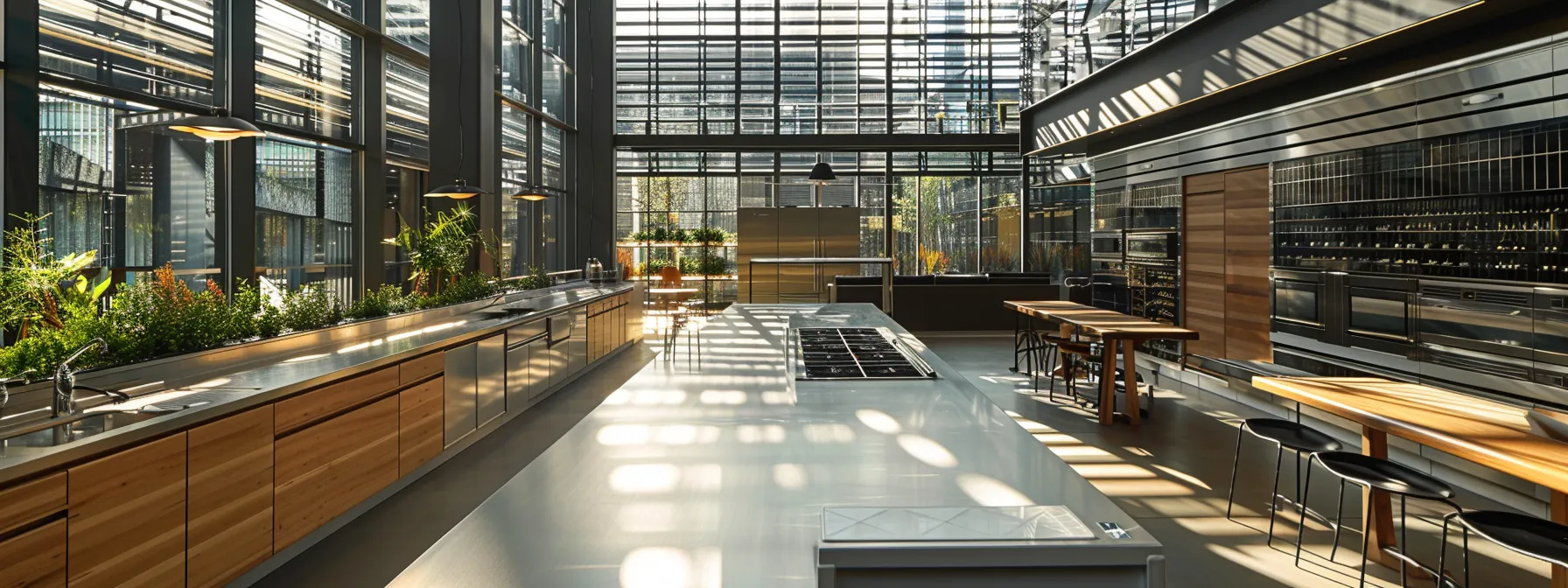
Integrating green technology into kitchen design enhances both sustainability and functionality. Smart home systems optimize energy use, reducing waste while maintaining a chic atmosphere. Water-saving fixtures and fittings minimize consumption without compromising style. Additionally, solar panels offer renewable energy for kitchen needs, supporting eco-friendly choices alongside materials like metal, porcelain, and granite, which complement modern aesthetics.
Smart home systems play a pivotal role in promoting energy efficiency in kitchen design. By enabling homeowners to monitor and control their energy use, these systems optimize daily routines and reduce waste. For example, automated lighting can be programmed to adjust according to the time of day, ensuring that energy is not consumed unnecessarily. This integration not only simplifies kitchen operations but also contributes to more sustainable living practices.
Moreover, smart appliances connected to home systems can significantly enhance energy management. Devices such as smart refrigerators can notify homeowners of energy consumption patterns, allowing them to make informed choices about usage. By incorporating these technologies, kitchens can become both stylish and eco-friendly, as they effectively support energy-saving efforts while maintaining modern aesthetics.
Water-saving fixtures and fittings play a critical role in creating a stylish and sustainable kitchen. These innovations not only enhance the overall design of the space but also significantly reduce water consumption, addressing an essential aspect of eco-friendly living. For instance, installing low-flow faucets and aerators can decrease water usage without sacrificing performance, providing homeowners with an effective solution to minimize waste while maintaining functionality.
Additionally, incorporating water-efficient dishwashers into kitchen designs allows for considerable water savings compared to traditional models. With advanced technology, these appliances clean dishes thoroughly while consuming less water and energy, aligning with sustainable practices. By equipping kitchens with these smart fixtures, homeowners can enjoy both an aesthetically pleasing environment and the benefits of reduced utility bills, making a positive impact on both their lifestyle and the planet.
Solar panels serve as an innovative solution for homeowners looking to reduce energy consumption in their kitchens. By harnessing sunlight, these systems generate renewable energy that can power various appliances, from refrigerators to dishwashers. Over time, this integration can lead to significant savings on energy bills while contributing to a more sustainable lifestyle.
Incorporating solar panels not only supports eco-friendly practices but also enhances the overall functionality of the kitchen. With advancements in solar technology, homeowners can effectively reduce their carbon footprint while enjoying modern conveniences. This renewable energy option aligns perfectly with stylish kitchen designs, ensuring that aesthetics and sustainability coexist harmoniously.
Stylish and sustainable kitchen design transforms living spaces while prioritizing environmental responsibility. Homeowners can make impactful choices by selecting energy-efficient appliances, utilizing reclaimed materials, and incorporating natural light. These strategies not only create beautiful kitchens but also contribute to reducing waste and conserving resources. By embracing these design secrets, individuals can enhance their homes and foster a more eco-friendly lifestyle.
